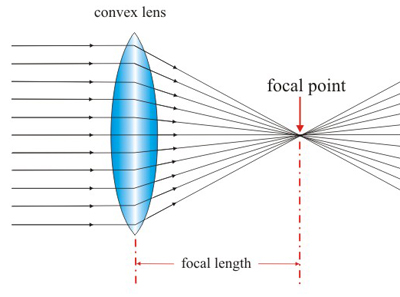gozert
0
- Joined
- Nov 18, 2014
- Messages
- 1,076
- Points
- 63
Recently I have been thinking of doing a NDG7475 520nm build, but this time I want to optically correct it.
My idea was to simply expand the beam with a cylindrical concave lens first and then place a cylindrical convex lens after that. Now here's what I'm wondering. Will it be worth optically correcting the beam when there will be a beam expander at the end anyways?
Also, would anybody mind explaining me how optically correcting a beam with these two lenses exactly works? I've found many drawings of the convex lens working similar to a magnifying glass. If that would be the case, then it would be very hard to achieve a thin, low divergent beam right? On every example I found it showed that the light diverged immensely after reaching the focal point.
Here a picture of what I mean:

My idea was to simply expand the beam with a cylindrical concave lens first and then place a cylindrical convex lens after that. Now here's what I'm wondering. Will it be worth optically correcting the beam when there will be a beam expander at the end anyways?
Also, would anybody mind explaining me how optically correcting a beam with these two lenses exactly works? I've found many drawings of the convex lens working similar to a magnifying glass. If that would be the case, then it would be very hard to achieve a thin, low divergent beam right? On every example I found it showed that the light diverged immensely after reaching the focal point.
Here a picture of what I mean:

Last edited:







